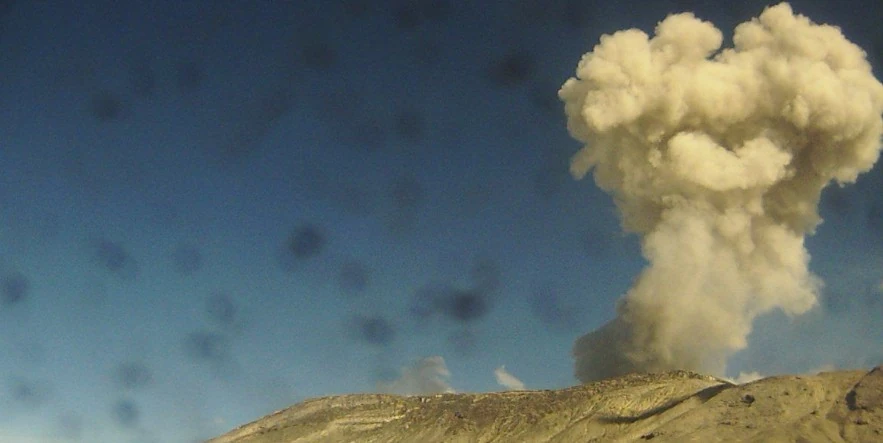Increased rock fracturing at Colombia’s Nevado del Ruiz volcano

A notable increase in seismic activity associated with rock fracturing started at Colombia’s Nevado del Ruiz volcano on January 3, 2024. The alert status remains at Yellow, indicating unstable behavior and potential for quick escalation. This volcano is known for producing the deadliest lahar in history.
The activity started around 3 km (1.8 miles) northwest of the Arenas crater at 15:06 UTC, and escalated rapidly, culminating in 600 recorded earthquakes by 18:10 UTC.
Among these, the most significant was the M3.9 earthquake at 16:03 UTC, felt by officials of the Los Nevados National Natural Park, SGC personnel conducting fieldwork, and residents in nearby areas, including the city of Manizales.
The seismic activity also included events linked to fluid movement within the volcano and noted thermal anomalies at the crater’s base. These signs point to the volcano’s variable and unstable nature, currently under a Yellow alert. This alert level indicates a heightened state of awareness due to the unpredictable and often rapidly changing conditions of the volcano.
While maintaining the Yellow alert, authorities urge the community not to become complacent with the volcano’s behavior. The current state suggests less instability and a lower probability of significant eruption. However, they emphasize that the situation can quickly escalate, potentially leading to an Orange or even Red alert, indicating higher levels of imminent risk.
Nevado del Ruiz is a glacier-covered volcano in central Colombia, located about 129 km (80 miles) west of the capital city Bogota, spanning over 200 km² (77 mi2). It comprises three main edifices made of andesitic and dacitic lavas and pyroclastics from the Pleistocene era. The current cone features a cluster of lava domes within the older edifice’s caldera.
At its summit lies the 1 km (0.6 miles) wide, 240 m (790 feet) deep Arenas crater. Notable features include the La Olleta pyroclastic cone on the southwest flank, possibly active in historical times, and steep flanks shaped by massive landslides.
Historical eruptions dating back to the 16th century, notably melting its icecap, have led to destructive lahars.
The most catastrophic lahar event was the Armero tragedy on November 13, 1985, when a small eruption led to a massive lahar, obliterating the town of Armero in Tolima and resulting in approximately 25 000 deaths, marking it as the deadliest lahar in history. Similar, albeit less fatal, events occurred in 1595 and 1845.
References:
1 Boletin Extraordinario – Volcan Nevado del Ruiz – Servicio Geologico Colombiano – January 3, 2024
2 Nevado del Ruiz – Geological Summary – GVP
Featured image: SGC

Commenting rules and guidelines
We value the thoughts and opinions of our readers and welcome healthy discussions on our website. In order to maintain a respectful and positive community, we ask that all commenters follow these rules.